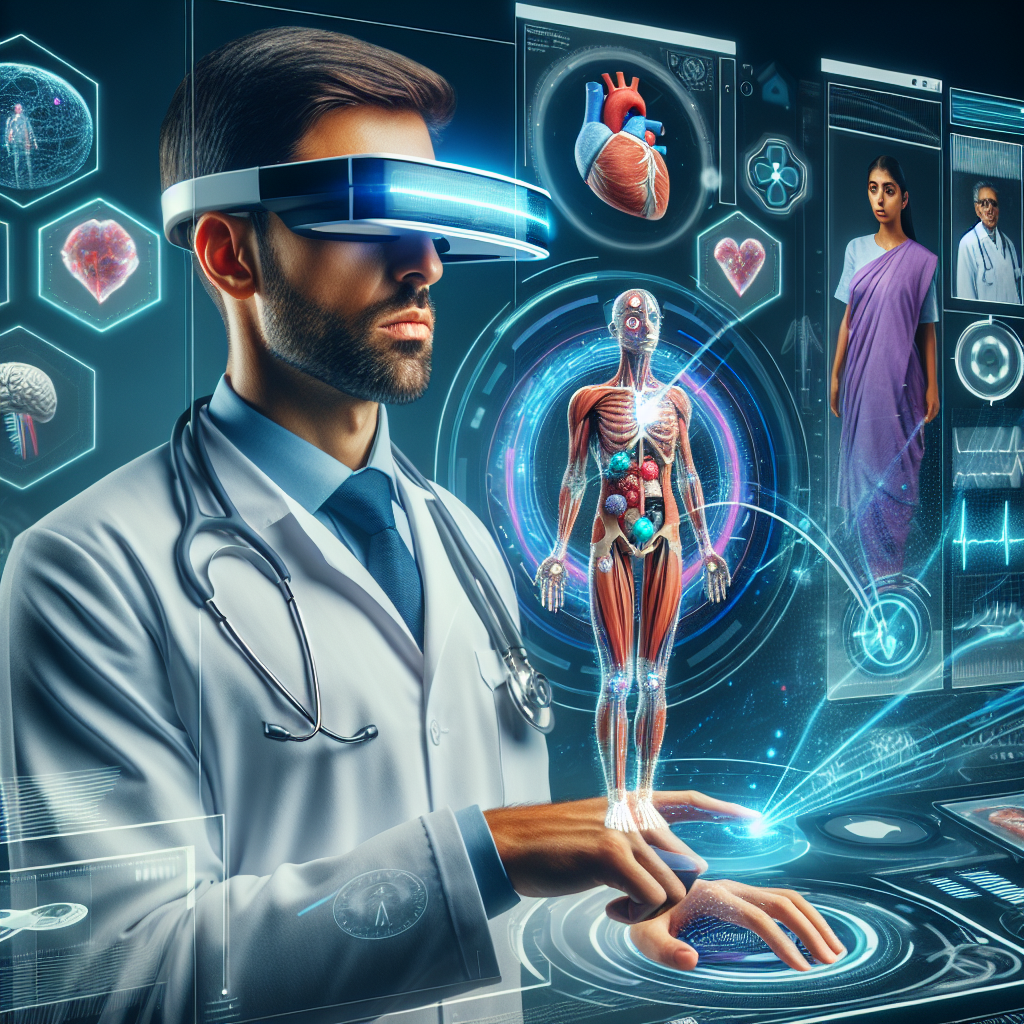Revolutionizing Healthcare: How AR is Transforming Telemedicine
In recent years, the healthcare industry has witnessed significant advancements with the help of cutting-edge technologies. One such technology that is making waves in the healthcare world is augmented reality (AR). AR is a technology that overlays digital information onto the real world, creating an interactive and immersive experience for users. In the field of telemedicine, AR is transforming the way healthcare is delivered, making consultations more interactive, personalized, and effective.
Telemedicine, also known as telehealth, is the remote delivery of healthcare services using telecommunications technology. It allows patients to consult with healthcare providers from the comfort of their homes, eliminating the need for physical visits to the doctor’s office. Telemedicine has been around for decades, but with the integration of AR technology, it is now entering a new era of innovation and efficiency.
One of the key ways in which AR is revolutionizing telemedicine is by enhancing the doctor-patient interaction. With the help of AR, healthcare providers can now use virtual reality headsets or smart glasses to visualize a patient’s medical condition in real-time. This allows doctors to make more accurate diagnoses and provide personalized treatment plans based on the patient’s specific needs. AR also enables doctors to perform virtual examinations and surgeries, reducing the need for in-person visits and minimizing the risk of infection for both patients and healthcare providers.
Another benefit of AR in telemedicine is its ability to improve patient education and engagement. By using AR technology, healthcare providers can create interactive and immersive educational experiences for patients, helping them better understand their medical conditions and treatment options. This not only improves patient outcomes but also increases patient satisfaction and compliance with treatment plans. Patients can also use AR technology to monitor their own health and track their progress over time, empowering them to take control of their own healthcare journey.
In addition to enhancing the doctor-patient relationship, AR is also transforming the way medical education and training are conducted. With AR technology, medical students and healthcare professionals can engage in realistic and immersive simulations of medical procedures and surgeries, allowing them to practice and refine their skills in a safe and controlled environment. This not only improves the quality of care provided to patients but also reduces the risk of medical errors and complications.
Furthermore, AR is revolutionizing the way medical conferences and events are conducted. With the use of AR, healthcare professionals can attend virtual conferences and seminars from anywhere in the world, interacting with speakers and other attendees in real-time without the need to travel. This not only saves time and money but also allows for greater collaboration and knowledge-sharing among healthcare professionals.
Overall, AR is revolutionizing telemedicine by improving patient outcomes, enhancing the doctor-patient relationship, and transforming medical education and training. As AR technology continues to advance, we can expect to see even greater innovations in the field of healthcare, ultimately improving the quality and accessibility of healthcare services for patients around the world.
FAQs
Q: Is AR technology safe for use in telemedicine?
A: Yes, AR technology is safe for use in telemedicine. It has been rigorously tested and validated for its accuracy and effectiveness in medical settings.
Q: How can patients access AR-enabled telemedicine services?
A: Patients can access AR-enabled telemedicine services through their healthcare provider’s website or mobile app. They may need to download a specific app or software to use the AR features.
Q: Are AR-enabled telemedicine services covered by insurance?
A: In many cases, AR-enabled telemedicine services are covered by insurance, just like traditional in-person visits. Patients should check with their insurance provider to verify coverage.
Q: Can AR technology diagnose medical conditions on its own?
A: No, AR technology cannot diagnose medical conditions on its own. It is used to enhance the diagnostic capabilities of healthcare providers and improve the overall patient experience.
Q: How can healthcare providers integrate AR technology into their practice?
A: Healthcare providers can integrate AR technology into their practice by investing in AR-compatible devices and software, training their staff on how to use the technology, and promoting the use of AR-enabled telemedicine services to their patients.
